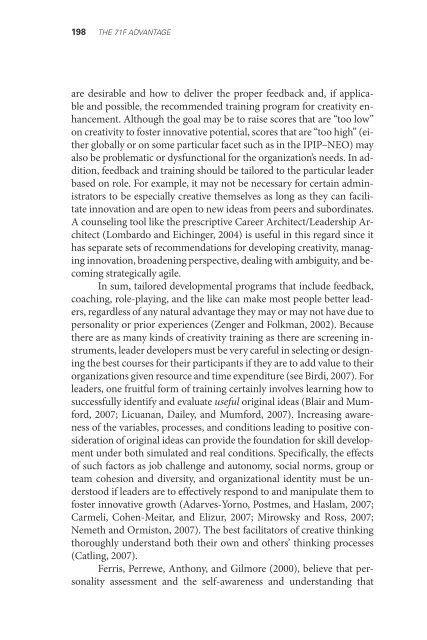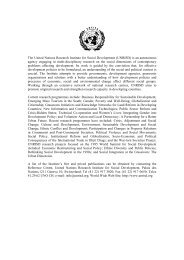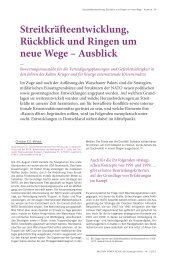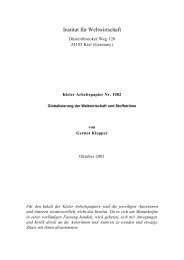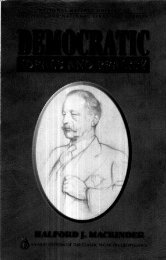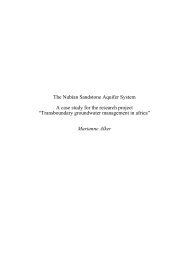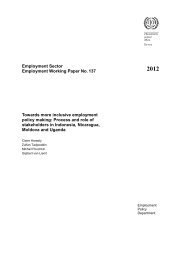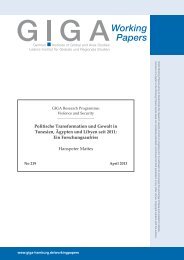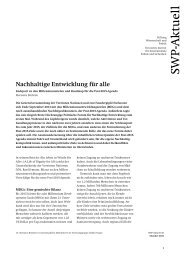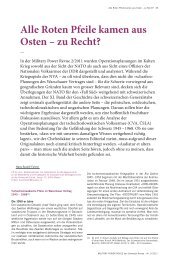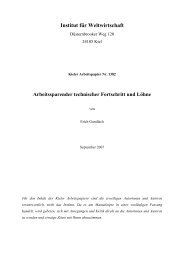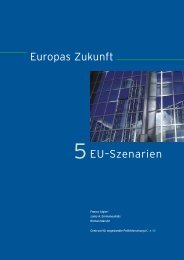Understanding and Measuring Creative Thinking in Leaders
Understanding and Measuring Creative Thinking in Leaders
Understanding and Measuring Creative Thinking in Leaders
Create successful ePaper yourself
Turn your PDF publications into a flip-book with our unique Google optimized e-Paper software.
198 THE 71F ADVANTAGEare desirable <strong>and</strong> how to deliver the proper feedback <strong>and</strong>, if applicable<strong>and</strong> possible, the recommended tra<strong>in</strong><strong>in</strong>g program for creativity enhancement.Although the goal may be to raise scores that are “too low”on creativity to foster <strong>in</strong>novative potential, scores that are “too high” (eitherglobally or on some particular facet such as <strong>in</strong> the IPIP–NEO) mayalso be problematic or dysfunctional for the organization’s needs. In addition,feedback <strong>and</strong> tra<strong>in</strong><strong>in</strong>g should be tailored to the particular leaderbased on role. For example, it may not be necessary for certa<strong>in</strong> adm<strong>in</strong>istratorsto be especially creative themselves as long as they can facilitate<strong>in</strong>novation <strong>and</strong> are open to new ideas from peers <strong>and</strong> subord<strong>in</strong>ates.A counsel<strong>in</strong>g tool like the prescriptive Career Architect/<strong>Leaders</strong>hip Architect(Lombardo <strong>and</strong> Eich<strong>in</strong>ger, 2004) is useful <strong>in</strong> this regard s<strong>in</strong>ce ithas separate sets of recommendations for develop<strong>in</strong>g creativity, manag<strong>in</strong>g<strong>in</strong>novation, broaden<strong>in</strong>g perspective, deal<strong>in</strong>g with ambiguity, <strong>and</strong> becom<strong>in</strong>gstrategically agile.In sum, tailored developmental programs that <strong>in</strong>clude feedback,coach<strong>in</strong>g, role-play<strong>in</strong>g, <strong>and</strong> the like can make most people better leaders,regardless of any natural advantage they may or may not have due topersonality or prior experiences (Zenger <strong>and</strong> Folkman, 2002). Becausethere are as many k<strong>in</strong>ds of creativity tra<strong>in</strong><strong>in</strong>g as there are screen<strong>in</strong>g <strong>in</strong>struments,leader developers must be very careful <strong>in</strong> select<strong>in</strong>g or design<strong>in</strong>gthe best courses for their participants if they are to add value to theirorganizations given resource <strong>and</strong> time expenditure (see Birdi, 2007). Forleaders, one fruitful form of tra<strong>in</strong><strong>in</strong>g certa<strong>in</strong>ly <strong>in</strong>volves learn<strong>in</strong>g how tosuccessfully identify <strong>and</strong> evaluate useful orig<strong>in</strong>al ideas (Blair <strong>and</strong> Mumford,2007; Licuanan, Dailey, <strong>and</strong> Mumford, 2007). Increas<strong>in</strong>g awarenessof the variables, processes, <strong>and</strong> conditions lead<strong>in</strong>g to positive considerationof orig<strong>in</strong>al ideas can provide the foundation for skill developmentunder both simulated <strong>and</strong> real conditions. Specifically, the effectsof such factors as job challenge <strong>and</strong> autonomy, social norms, group orteam cohesion <strong>and</strong> diversity, <strong>and</strong> organizational identity must be understoodif leaders are to effectively respond to <strong>and</strong> manipulate them tofoster <strong>in</strong>novative growth (Adarves-Yorno, Postmes, <strong>and</strong> Haslam, 2007;Carmeli, Cohen-Meitar, <strong>and</strong> Elizur, 2007; Mirowsky <strong>and</strong> Ross, 2007;Nemeth <strong>and</strong> Ormiston, 2007). The best facilitators of creative th<strong>in</strong>k<strong>in</strong>gthoroughly underst<strong>and</strong> both their own <strong>and</strong> others’ th<strong>in</strong>k<strong>in</strong>g processes(Catl<strong>in</strong>g, 2007).Ferris, Perrewe, Anthony, <strong>and</strong> Gilmore (2000), believe that personalityassessment <strong>and</strong> the self-awareness <strong>and</strong> underst<strong>and</strong><strong>in</strong>g that


